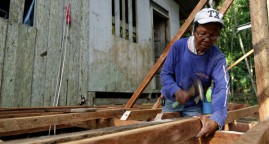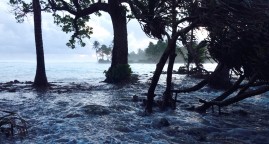The private sector: stepping up
The private sector response to Typhoon Haiyan was more sophisticated than for any preceding natural disaster. It responded at scale, with a wide array of resources and expertise, mainly in close collaboration with the government and traditional humanitarian actors (civil society, the Red Cross and the United Nations).
This article draws on interviews with over 30 representatives from the private sector, civil society, the UN, the IFRC/Philippines Red Cross and the government of the Philippines. The interviews probed private sector alignment with the OCHA-WEF ‘Guiding Principles for Public-Private Collaboration for Humanitarian Action’ and contributions to the five pillars of the ‘Hyogo Framework for Action on Disaster Risk Reduction’
Read the article on the ODI website
Related Articles
Ditching the disaster cycle: Focus on sustainable development to manage risk
03/16/2015. Focus on sustainable development to manage risk…
Climate refugees: eternal “forgotten Law People”?
11/30/2015. Hundreds of millions of people are likely to leave their land due to the environmental problems.
Drones to be used in Earthquake damage assessment
02/24/2015. The NAM will be using drones to assess the damage caused by earthquakes in Groningen, BNR report






